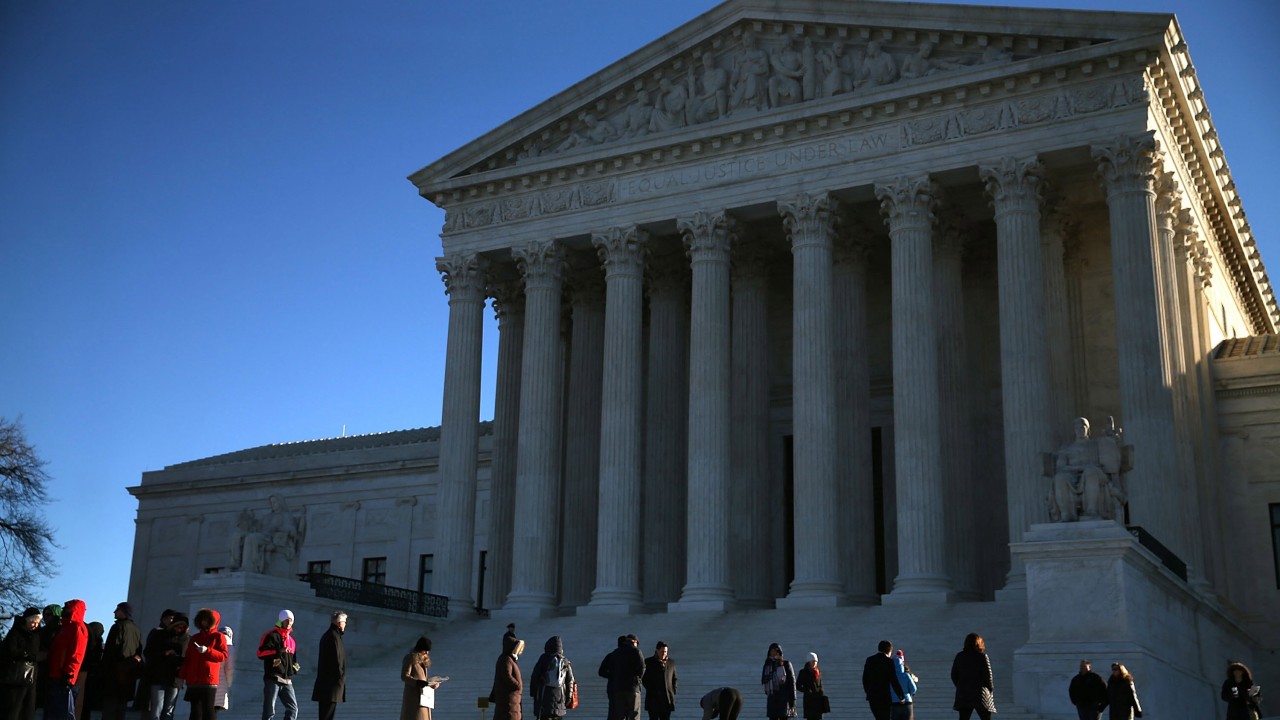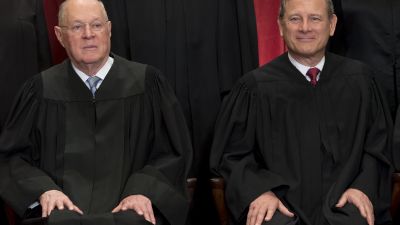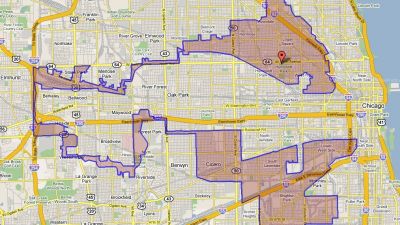
A court that's normally divided along ideological lines came together on a bedrock principle of voting rights. (Photo by Mark Wilson/Getty Images)
The Supreme Court now has the power to put a decisive end to extreme gerrymandering — if Justice Anthony Kennedy and the four liberal-leaning justices can craft a clear and manageable standard to identify when partisan mapmakers go too far.
But what if it doesn’t? What happens if Kennedy sides with the conservative justices, who in the oral arguments for Gill v. Whitford earlier this month, described the various mathematical standards that can detect a gerrymander as “sociological gobbledy-gook” or found them as imprecise and arbitrary as the recipe for their spicy steak rub?
Well, there’s a sobering way to answer that simply by looking at what happened the last time the Supreme Court agreed to revisit partisan gerrymandering, in the 2004 case Vieth v. Jubelirer. Then, as now, reformers eagerly anticipated that the court would provide that clear standard to determine “how much gerrymandering is too much.”
The political conditions were similar, and so was the makeup of the court. During the 2001 redistricting cycle, both political parties demonstrated their adeptness at using new technology like geographic information systems to create partisan seat advantages by manipulating district boundaries. Texas even embarked on a rare second round of mid-decade redistricting. Academics were calling for greater judicial scrutiny and advancing new regulatory prescriptions.
Those looking for a standard were disappointed — and it was Justice Kennedy who cast the decisive vote. While four Justices (Breyer, Ginsburg, Souter and Stevens) sought the adoption of specific tests to identify and remedy unconstitutional gerrymandering, Justice Scalia’s determination that there were no judicially discernible or manageable standards to separate legal from illegal gerrymanders carried the day, in a 5-4 vote.
Kennedy, however, held out the promise that a standard might emerge in the future, warning that “courts should be prepared to order relief,” because if they “refuse to entertain any claims of partisan gerrymandering, the temptation to use partisan favoritism in districting in an unconstitutional manner will grow.”
Few people anticipated just how prescient that warning was. Without the threat of judicial review, strategists in both parties were free to use districting to maximize “partisan favoritism,” against the rights of citizens to cast an equally weighted vote. Vieth initiated a quiet revolution, the impact of which we are only now beginning to see clearly.
Republicans noticed the opportunity and were determined to make the most of it, especially after Barack Obama’s decisive win in 2008 left the GOP in need of a road back to power at a time when political winds and demographic changes were not in their favor. Redistricting provided that path. Republicans launched a plan called REDMAP — short for the Redistricting Majority Project — and put $30 million toward capturing control of state legislative chambers nationwide in 2010, with the intent to capture every seat at the table when new state legislative districts and the new congressional lines were drawn the next year.
Karl Rove laid the strategy bare in the Wall Street Journal — making it clear that Republicans would attack down-ballot local races with an eye to dominating 2011 redistricting — but slumbering Democrats, still convinced they led a coalition of the ascendant, must not have read the paper that day. Rove’s op-ed pointed out that if Republicans could win 107 state legislative seats across 16 key states like Pennsylvania, Michigan, Ohio, Wisconsin and North Carolina, they’d have unilateral control of drawing nearly 190 of the 435 US House seats.
The only word Rove got wrong was nearly: REDMAP proved so successful that Republicans were able to draw 193 US House districts with Democrats frozen out of the process. Democrats, in comparison, controlled only 44.
But the spoils of the Great Gerrymander were reaped in 2012. Democratic US House candidates won 1.4 million more votes than Republicans. But the GOP held the chamber with a majority of 234-201.
The overall level of partisan gerrymandering nearly tripled nationwide, even while some states, like California, reduced the bias in their plans by taking control of the redistricting process out of the hands of the state legislature.
In some of the 18 states where bias was significant, Democrats actually received more votes, but Republicans received more seats. Only one of these states, Maryland, was controlled by Democrats. Historical studies suggest that 2012 was one of a handful of times in the nation’s history where partisan gerrymandering likely determined control over the House of Representatives.
In state legislatures like Wisconsin, the results were absurd. Even though they received 174,000 fewer votes than Democrats, Republicans took 60 of the state’s 99 state assembly seats. This outcome would eventually become the basis upon which Bill Whitford, a retired Wisconsin law professor, would bring partisan gerrymandering back to the Supreme Court.
While Justices Roberts and Gorsuch seemed very concerned about the constitutionality of the Court stepping into the jurisdiction of the “political branches” and deciding whether electoral outcomes are constitutional or not, they seemed completely unaware of the massive political impact that Vieth has already unleashed. We are living through the consequences of a smoldering constitutional crisis right now, and it could further engulf the nation within the next four years.
The level of partisan bias under the current redistricting plans is such that even a historic “wave” election the size of 2008, with congressional Democrats winning 55 percent of the popular vote, is probably not enough to yield control of the House of Representatives in 2018. Or in 2020. In other words, American voters are no longer determining who controls the House of Representatives every two years. Instead, wildly gerrymandered state legislatures are selecting districting plans that can defy the will of the people for a decade.
It could get worse. While gerrymandering may thwart majority rule in the House of Representatives, other arcane features of federal electoral systems can contribute to perverse outcomes. The US Senate is designed to underrepresent more populous states, so it would not be surprising for the 2018 and 2020 elections to yield a majority of seats to the party with fewer votes.
The White House, the Senate and the House — all under the control of the party with fewer votes. It’s not hyperbole, but a possible outcome of the 2018 election. However you describe the prospects of unified minority rule, you can’t call it democracy.





